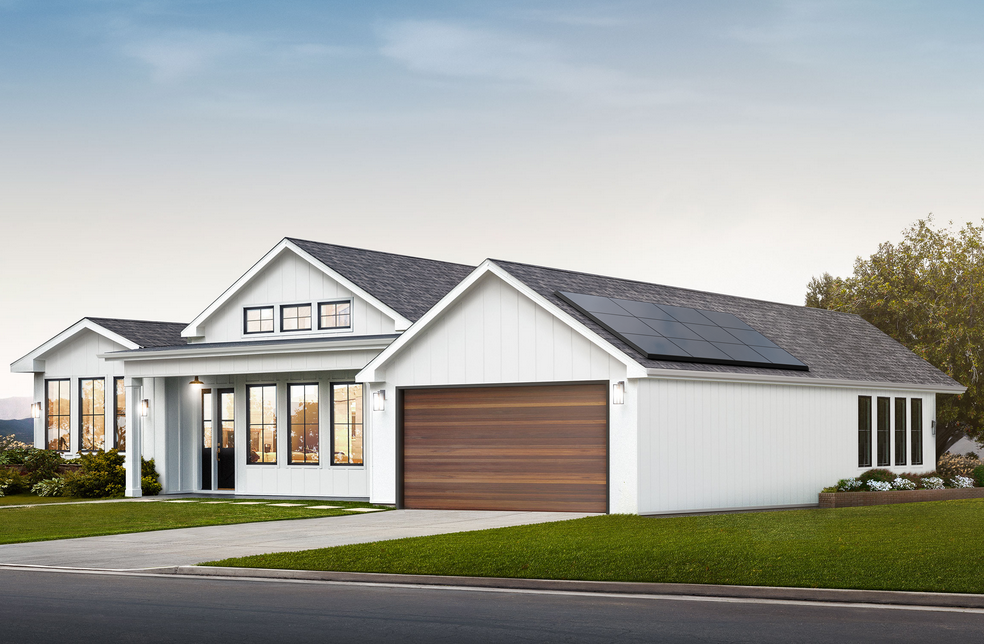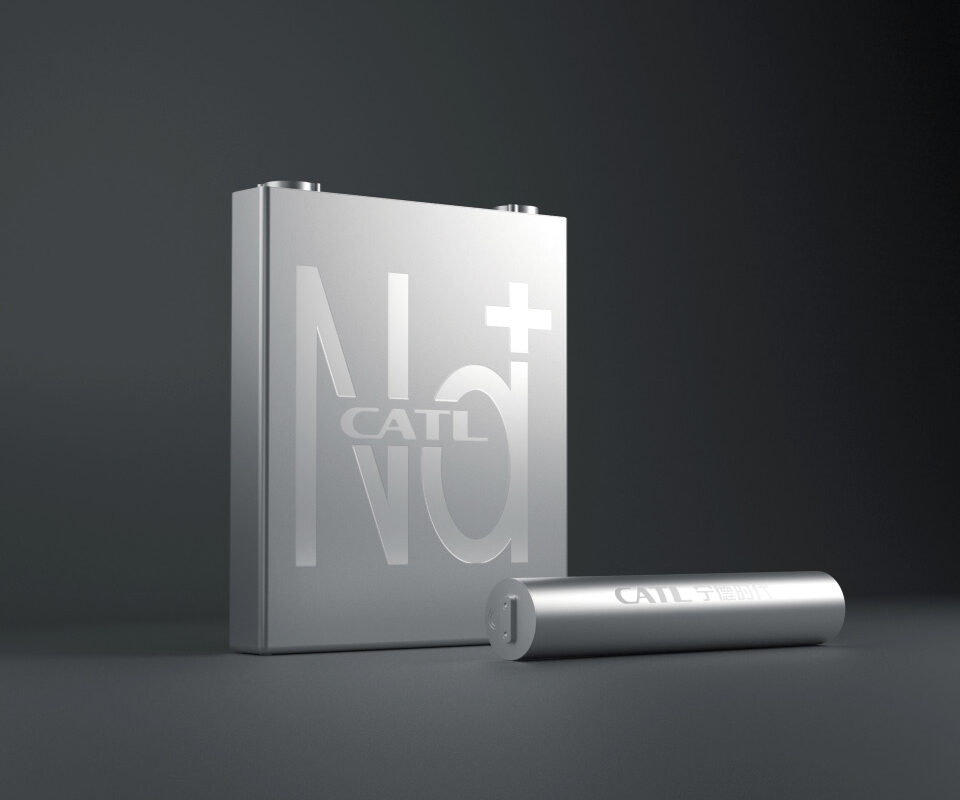From pv magazine USA
Tesla declared, via a blog post on Friday, that it is “introducing the lowest-ever cost to go solar” in the United States. The company claims that its average residential system size is now one-third less expensive than the market average.
According to the Solar Energy Industries Association (SEIA), residential solar prices in the United States were $2.83/W in the first quarter. So Tesla is presumably promising a cost of about $1.89/W installed, before incentives.
Tesla claims that with its new pricing, “an average customer buying a large system in California will make their money back in only six years by reducing their electric bill, ultimately making an average of $88,000 over the system’s lifetime [depending on financing method].”
It claims that its new pricing is possible because of a 64% reduction in sales and marketing costs from moving to fixed solar system sizes and its “single click” online ordering experience.
Good price
Based on my home address and a hypothetical $300 per month electric bill, Tesla’s website recommended its “large” PV system at 12.24 kW and priced the solar at $23,500 or $17,390 after incentives. That’s $1.42/W after incentives — a good price for residential solar in the United States.

I live in a rural spot and Pacific Gas & Electric is my utility, so I need energy storage. Tesla recommends three Powerwalls to give me a nine-day backup at a total system cost of $44,000 — or $32,560 after incentives. The price quote claims that the backup “includes plugs, lights, 120 V appliances, and some 240 V appliances.”
‘Full of pitfalls'
Although these are great price-per-watt numbers, a solar installer colleague said that Tesla’s new process is “ludicrous and full of pitfalls for consumers.” She said that Tesla:
- Oversizes the solar systems
- Oversizes the battery
- Does not consider available roof space, shading or roof type
- Does not consider the necessary electrical service upgrades
This is certainly the case with my hypothetical system.
She suggests that “the consumer will happily sign up for a system thinking they are getting a deal, and then find out that costs are 25% to 50% higher when Tesla does the proper engineering. Plus the customer will get a system that is much bigger than they need, and would likely be rejected by the local utility for being so substantially oversized.”
Tesla installed 35 MW of solar in the first quarter, down 35% from the 54 MW installed in the fourth quarter of 2019, and down 26% from 47 MW in the first three months of last year. Tesla has decimated its solar business from installation peaks of years past and its market share lead has long been surrendered to Sunrun and others.
Also in Tesla news: Tesla CEO Elon Musk postponed the company’s annual shareholder meeting in a tweet.

This content is protected by copyright and may not be reused. If you want to cooperate with us and would like to reuse some of our content, please contact: editors@pv-magazine.com.




CoVid-19 impacted Q1 and Q2 even worse. That’s pretty much industry wide. Figures for those two time frames will be worthless as an indicator of growth or a lack thereof for other reasons. Tesla reporting pushed to Q3 as no crowds can assemble… or because Q2 will be a train wreck as a matter of course and they choose to avoid the inevitable circus that causes. Take your pick.
Was 1000 installations/week on track before CoVid-19? No way to tell. As for additional costs after basic advertising due to local issues, is that par for the course in the industry? Certainly when you buy a car, they don’t mention the insurance and delivery charges up front.
The question is whether this is industry norm or not?
Otherwise its downplaying a shift down in the price of entry to solar.
I have represented Tesla’s Solar product.
The “pitfalls” mentioned in this article are greatly overstated! Tesla has no interest in “oversizing” systems. As for the “shade on the roof” issue, the actual shade on a roof is depicted by a Google Earth program that does a great job of predicting the actual sun on the roof for the exposure, trees and different times of the year. One advantage of Tesla Solar is that everything is done in house, from permit pulling, electrical and installation. Sounds like your “friend” is trying to sell you a system from another company…
Hi LInda, thanks for your comment, Eric has added the following in response:
Regarding Tesla’s new process, it’s full of pitfalls for consumers.
I sized out systems for my current house and my old rental house. For my rental house the system recommended by Tesla involved a 12.24 kW system for $23,500.
That’s a great price ($1.92/W), except: There is not enough roofspace for that large a system unless panels are installed in the shade (which Tesla does, regularly); the roof is metal tiled, under which are wood shakes – it’s very expensive to install on that type of roof most installers don’t; the house has a 125 amp electric service, which would need to be upgraded to 200 amps; to install 12 kW of solar on this type of roof would cost more like $3.50/W — and it would have to be a smaller system. Upgrading the electrical service would be another $4-6k; and 3 Powerwalls (40.5 kwh) is way overkill. One Powerwall would probably be okay.
For my current house, Tesla recommended a 16.32 kW system for $30,000 ($1.84/W). Once again, a great price but wrong design and an inaccurate quote.
I currently have a 12 kW system and I have plenty of excess energy. The proper sizing is more like 10 kW, depending on my EV use. 16 kW is ridiculously over-sized. The roof is a type of tile that is very difficult to work on. Tesla did not consider that issue. Actual pricing would be more like $4/W to properly flash around all the delicate tiles.
Tesla recommended 4 Powerwalls (54 kWh). I currently have 20 kWh of battery capacity which is properly sized.
Installing a 16 kW system and 4 Powerwalls would require major upgrades to the electrical service, adding at least another $5k.
The consumer will happily sign up for a system thinking they are getting a deal and then find out that costs are 25-50% higher when Tesla does the proper engineering. Plus the customer will get a system that is much bigger than they need and which would likely be rejected by the local utility for being so substantially over-sized.
How about Tesla’s terrible reviews? Are they “overstated”?? https://www.solarreviews.com/installers/solarcity-reviews
Hope Tesla can actually deliver on this price and promise. With this very aggressive pricing i see a hugh demand and them taking many thousands of $100 non-refundable deposits and their famous for making people wait years, like when they took many deposits on the powerwall at first and made people wait years and their communication was horrible.
I’ve been in the industry longer than tesla and this cannot be profitable and sustainable. You just cannot make money at that price.
This pricing strategy will put a lot of solar industry sales and design professionals out of a job and these are the people that create great personal relationships with homeowners, families, and friends and make sure their projects are designed correctly and their projects completed in a timely manner.
Red flags!
Couldn’t agree more. Look at their reviews and tell me this is the company you want putting solar on your roof??? https://www.solarreviews.com/installers/solarcity-reviews
One bottleneck of the Tesla products is the power delivery capability.
The powerwall 2 can deliver 5kW max, that is not enough to run air conditioning and lights and kitchen in the same time. So they suggest customers to get 2-3 powerwalls, but then they end up with huge unused storage capacity and a lot of space taken up in the garage.
It is also not enough to absorb the 8kw or 16kw solar energy when the grid is out. I assume when the grid is out, and having a larger solar array, the user will not be able to charge the battery and will be out of energy until the grid comes back on.
Powerwall-3 needs to have 15kW load/charge rating, while retaining its perfect 14kwh storage capacity.
>”Plus the customer will get a system that is much bigger than they need, and would likely be rejected by the local utility for being so substantially oversized.”
This article seems to endorse the wide spread practice by utility companies to regulate the size of demand-side solar systems.
10KW (~12KW) systems are undersized when you own an electric vehicle.
Why do we let the few regulating the hens in the hen house? Why don’t we see a huge outcry against utility companies who imposter as regulatory governmental agencies to cripple our solar systems?
https://pv-magazine-usa.com/2020/05/21/florida-man-takes-fpl-to-court-alleging-the-utility-acts-like-a-net-metering-regulator/
Hello Achim, I’m sorry that your interpretation of the article was that it takes a stance of favor towards utilities regulating distributed generation system sizing, as the opposite was my intent. I agree, utilities are utilities and it is the responsibility of regulatory commissions, if anyone, to regulate the size of distributed systems.
Tim Sylvia
I’d like to comment that Tesla’s handling of solar lease transfers of existing (SolarCity) installations between homeowners (on sale of home) is horrible amidst this Covid-19 pandemic. Slow process: slower than real estate escrow closing transaction, even after escrow closes on home and you take keys to home & set up utilities, you’re solar lease transfer still hasn’t fully completed for you to see your account details and pay your bill when you think you should be getting the bill per the schedule. And there’s lack of visibility/transparency, no ETA on when the transfer completes and what exactly to expect. Communications by email, slow response there, they always try to refer you to their website for solar for communications but you can’t actually do much there, and the phone line for lease transfer status/support puts you on hold forever with no callback option. As a tech company with innovation in cars, it’s terrible customer service innovation on the solar side, you’d think they’d revamp the solar(city) support system into the modern internet era but it seems cumbersome to me.
Thanks for sharing such a pleasant opinion, article is
nice, thats why i have read it entirely
Recently completed a solar install. The schedule from Tesla solar was no different than any other provider. Tesla is able to install for a lot cheaper. The door to door sales model from other providers significantly inflates the cost of solar. Tesla is doing great to remove the middle people and pass the cost savings on to consumers.